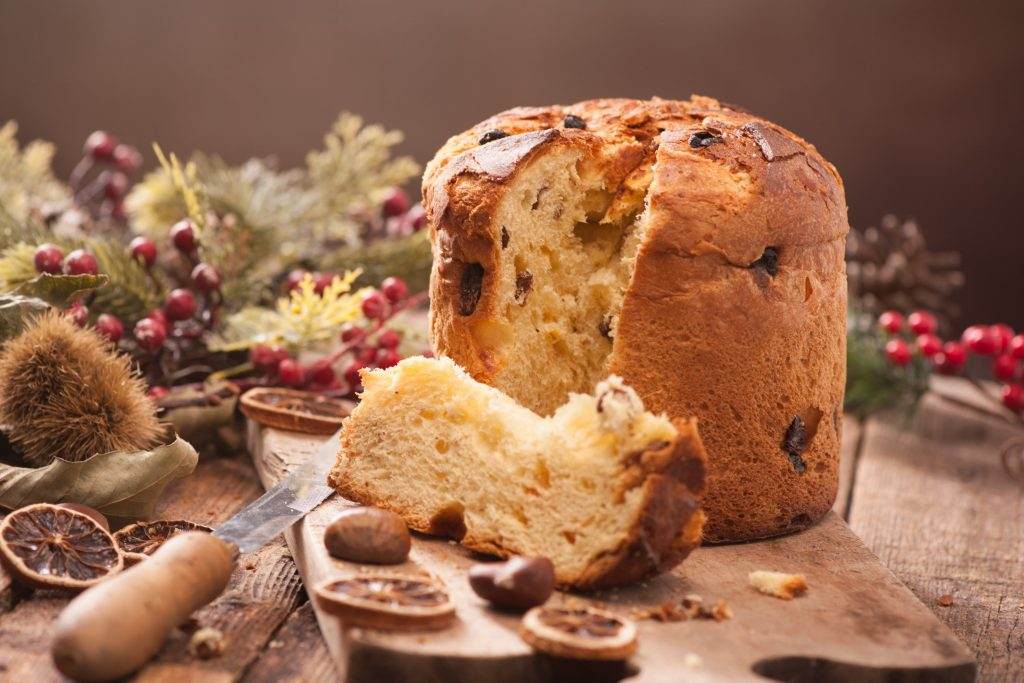24 Dec The history of the Milanese Panettone
Some people at Christmas decor the tree while others prefer to make the Nativity scene, someone turns on a thousand lights and other people put a garland out of the door. Someone celebrate Christmas Eve, others have lunch on 25th December. The adults exchange greetings and children wait for the gifts from Santa Claus. At Christmas everyone has their own habits, but there is one thing in common: on the Italian tables the Panettone can’t miss!

This traditional Christmas dessert is very old and, as most of you know well, its authentic recipe is from Milan. On how the Panettone, or "the panaton" (as the Milanese people call it), was born, there are different versions, but the best story is the one about a cook at the service of Ludovico il Moro:
the legend tells that the cook was instructed to prepare a sumptuous Christmas dinner to which were invited many nobles of the district. The banquet had great success, but , at the time of the dessert, there was a problem: the dessert had been in the oven for too long and almost became charred. To save the dinner, a little scullion named Toni proposed to prepare an alternative dessert using what was left in the pantry, which was a bit of flour, butter, some eggs, the lime zest and a few raisins. The cook, when pressed, agreed and went behind a curtain to spy the reactions from the guests. Unexpectedly, all of them were enthusiastic and the chef revealed the secret to the Duke, who wanted to know the name of that delicacy: "it is the “pan del Toni” (bread of Toni). Since then it is the "bread of Toni", the Panettone.
How things went really remains a mystery, but what is certain is that the original cake was more like a loaf. Some ancient documents report that the night of 24th December three large loaves of wheat were used to be brought to the table, a number that refers to the Trinity. The bread was not that of everyday, but of a higher quality. The loaves were served to diners starting from the family man and a slice was preserved until the following year, to symbolize continuity, rebirth and the cyclical nature of life.
Also the shape was different! Since the mold was not used, the leavening wasn't addressed upward, so the cake remained low and wide. The change came in the Twenties, thanks to the meeting between the pastry chef Angelo Motta and Mr. Rijoff, a Russian who emigrated to Italy to escape the Bolshevik Revolution. The latter ordered Motta, who at the time had a bakery near Piazza Vetra, two hundred Kulich, the typical Russian sweets with the characteristic of being put into cylindrical molds before leavening in the oven. Motta applied the idea to the Panettone, which was surrounded with paper-straw bands because it could grow upward as well, acquiring the characteristic "champagne cork" shape.
In addition to the shape, another difference between the Panettone of today and that of a time is that now a definitely greater amount of butter is used, which makes the sweet tastier. Also, they are now present many varieties that satisfy everyone's tastes, from traditional ones to the most eccentric tastes. For example this year, during the "Panettone King" demonstration, a Japanese creation got a great success by adding ginger and walnuts.
In any case, whether it is low or high, with raisins or candied fruit, covered with chocolate or served with cream, the Panettone is still the star of our Christmas!

